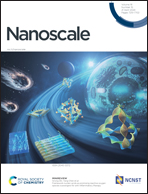Biological electricity generation system based on mitochondria-nanochannel-red blood cells†
Abstract
The high-efficiency energy conversion process in organisms is usually carried out by organelles, proteins and membrane systems. Inspired by the cellular aerobic respiration process, we present an artificial electricity generation device, aimed at sustainable and efficient energy conversion using biological components, to demonstrate the feasibility of bio-inspired energy generation for renewable energy solutions. This approach bridges biological mechanisms and technology, offering a pathway to sustainable, biocompatible energy sources. The device features a mitochondria anode and oxygen-carrying red blood cells (RBCs) cathode, alongside a sandwich-structured sulfonated poly(ether ether ketone) and polyimide composite nanochannel for efficient proton transportation, mimicking cellular respiration. Achieving significant performance with 40 wt% RBCs, it produced a current density of 6.42 mA cm−2 and a maximum power density of 1.21 mW cm−2, maintaining over 50% reactivity after 8 days. This research underscores the potential of bio-inspired systems for advancing sustainable energy technologies.



 Please wait while we load your content...
Please wait while we load your content...